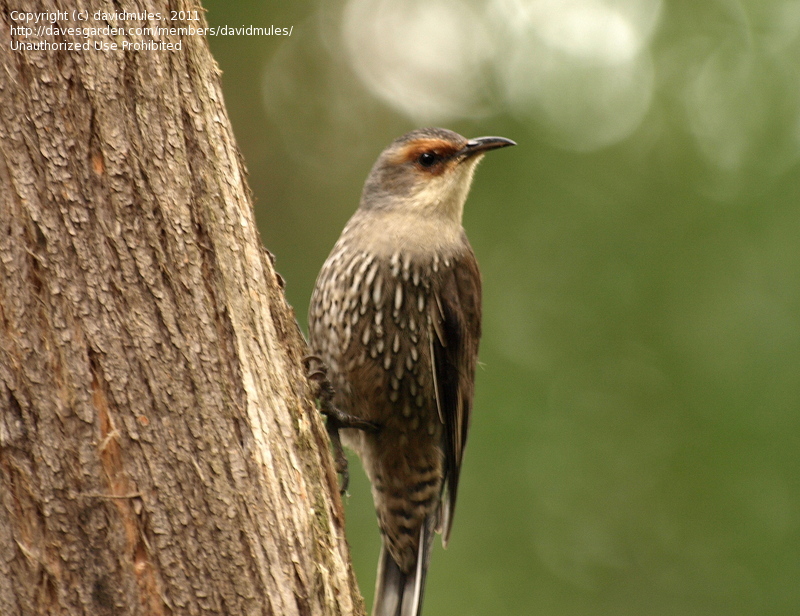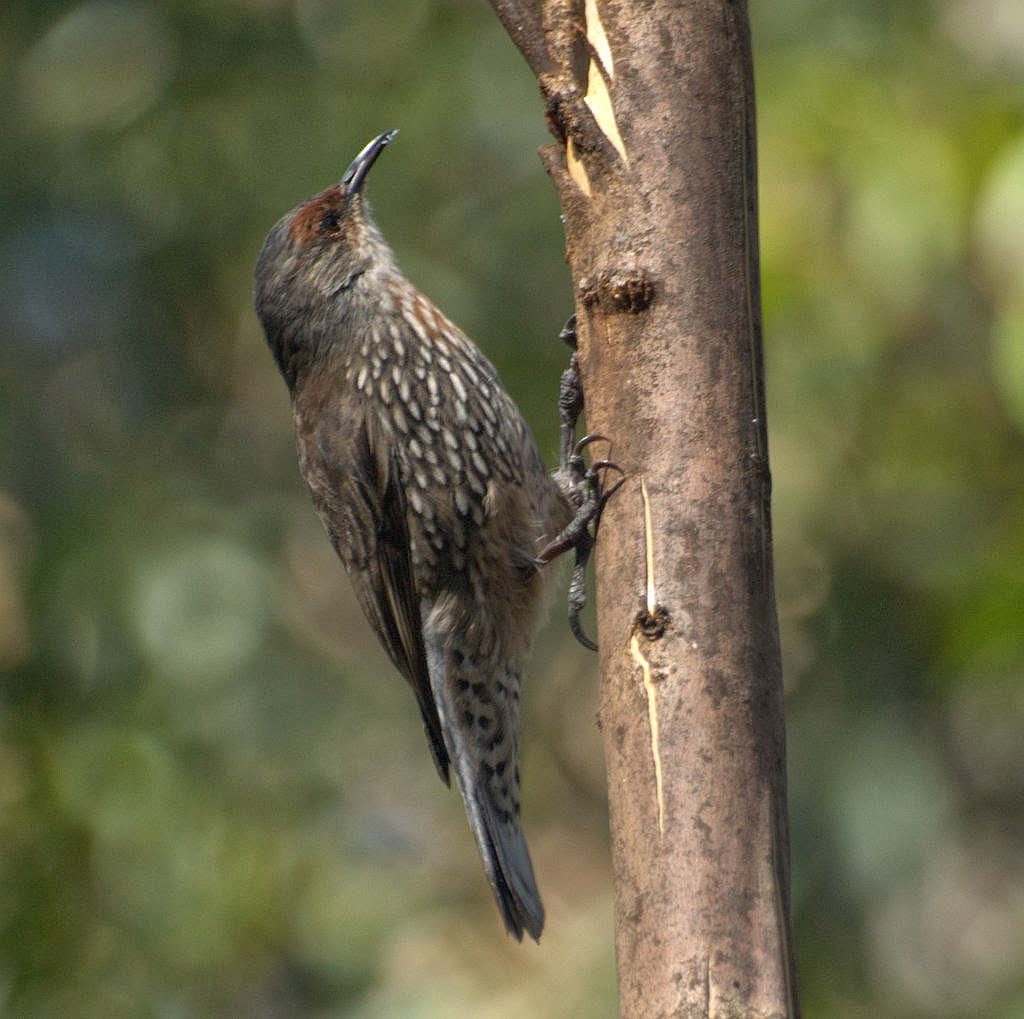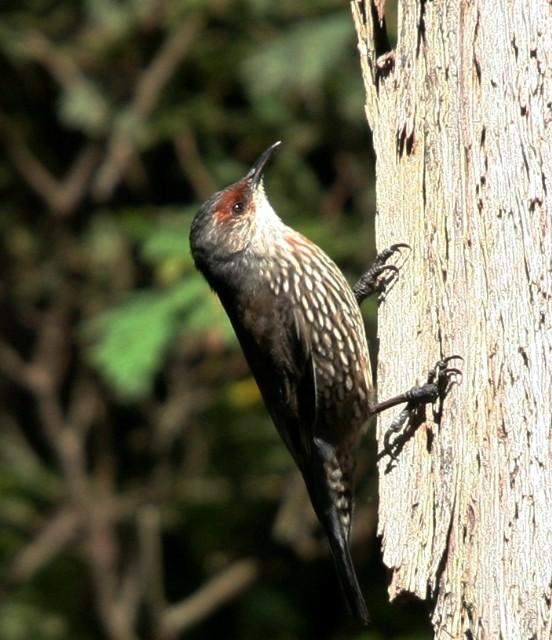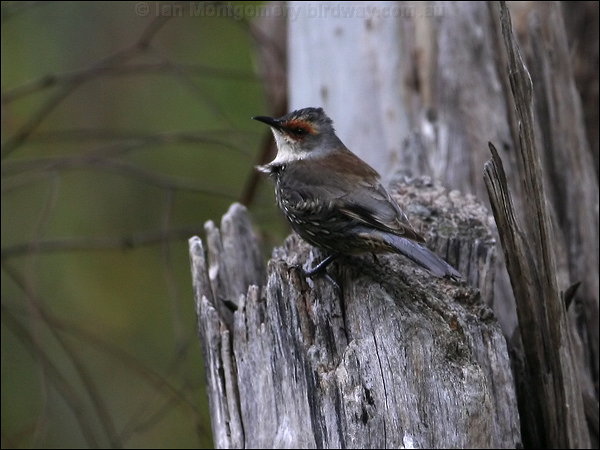
Climacteris erythrops
TAXONOMY
Climacteris erythrops Gould, 1841, Liverpool Plains, New South
Wales, Australia.
OTHER COMMON NAMES
English: Red-eyebrowed treecreeper; French: Йchelet а sourcils
roux; German: Rostbrauen-Baumrutscher; Spanish: Sube Palo
de Cejas Rojas.
PHYSICAL CHARACTERISTICS
6.3 in (16 cm); 0.8 oz (23 g). Underparts brown streaked with
white; gray head with rufous around eye, white throat, brown
mantle, and grayish tail.
DISTRIBUTION
Southeastern Australia from Brisbane to Melbourne.
HABITAT
Eucalypt forests of the Great Dividing Range, less commonly
in woodlands to the west of the range. Occasionally, temperate
and subtropical rainforest. Especially associated with eucalypts
that have peeling bark or that shed bark on their lower
branches and trunks.
BEHAVIOR
Lives in family groups in a large home range, but highly
sedentary. Aggression and conflict between neighbors much
less frequent than in the white-throated treecreeper. Rather
soft, chattering calls.
FEEDING ECOLOGY AND DIET
Typically probe into bark of rough-barked trees, and especially
into accumulations of peeling bark on gums and boxes (subgenus
Symphyomyrtus) for insects such as spiders and especially ants.
REPRODUCTIVE BIOLOGY
Breeds September–January in cooperative groups of three to
four birds. Nests are placed in tree hollows, typically in a spout
of a living tree. Clutch size is strictly two eggs, incubated by
the breeding female for about 18 days. Young are fed by parents
and helpers, and fledge at 25 days, with a high success rate
(74% in New South Wales).
CONSERVATION STATUS
Secure, but cope poorly with habitat fragmentation, and have
contracted from the west of their range where woodland has
been extensively cleared.
SIGNIFICANCE TO HUMANS
None known.
Other popular Animals
Photo Gallery of - Red-browed treecreeper




 Animalia Life
Animalia Life